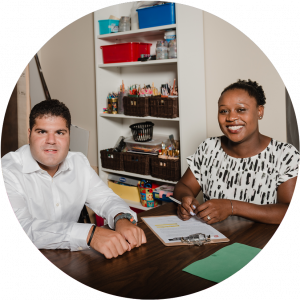The Issue
The changing nature of work is leaving many people behind. Young people, racialized groups, Indigenous people, immigrants, women, and people with disabilities have less access to good, inclusive employment opportunities or the training to successfully navigate today’s labour market. They are constantly let down by policies and supports that have not kept pace with their needs. Job precarity is a systemic contributor to poverty. Precarious workers are more likely to experience ups and downs in their income, passing on the precarity to other parts of their lives, like housing and food access. Over the past few years, racialized women have benefitted the least from Canada’s economic growth. Additionally, the pandemic has had a scarring and lasting effect on youth unemployment rates, even though many sectors are rebounding. There is a critical need for demand-driven training opportunities, and programs and services to address the needs of those who work under precarious conditions.
50%
People with precarious jobs earn approximately half of what people in stable jobs earn
37%
of workers in the Greater Toronto Hamilton Area work in some degree of precarious employment — despite the economic growth that occurred between 2011 and 2017
19.1%
of youth aged 15-24 in the GTA were unemployed in the first quarter of 2021
How we help
We aim to improve employment opportunities and financial security for low-income people facing multiple barriers. We work to close the gap between industries, employers, and talented job seekers by leveraging real labour market opportunities, and developing the in-demand skills and training pathways employers are calling for.
United Way is particularly interested in closing the opportunity gaps for communities and individuals that face a greater risk of employment precarity because of systemic disadvantages and discrimination. Our programs aim to improve employment outcomes, job retention and overall well-being for low-income “job seekers” through work-relevant education, skills training, experience, and expanded work-related networks. For example, for over two decades, our Toronto Enterprise Fund (TEF) has funded businesses that create training and job opportunities for people facing systemic barriers to employment. TEF has provided grants, social procurement services, and advocacy. Since 2000, more than 75 percent of TEF participants have entered the labour market.
Another example of this work we do is the Inclusive Local Economic Opportunity (ILEO) Initiative that brings together private, public, and community sectors to find innovative ways to reduce gaps in economic prosperity at the neighbourhood level. This unique initiative is convened by United Way Greater Toronto and BMO.

Heather McGregor, CEO, YWCA TorontoFor program participants in our shelters and permanent housing, social isolation has been a serious problem due to our caution about social distancing. Women have been confined to small living spaces without the advantage of group activities and support. For our participants who have been using our employment programs we have gone online to reach them, and in many cases, have arranged to have devices loaned to them. Our English language classes have also gone online using a new program that the participants and staff have had to learn. For many employment participants, the online service has been convenient as they have not had the expense of transportation or child care while attending our regular programs.
Here’s how your local love helped create better access to equitable and inclusive employment in Toronto and York Region:

32,898
Individuals received support to improve their employment opportunities and financial security

914
Individuals returned to full- or part-time school or training

2,466
Individuals achieved employment or are employed as a registered apprentice
August 31, 2018
What does precarious employment really look like?
These days, work isn’t always stable or secure. But you might be surprised to learn who’s getting left behind in today’s labour market